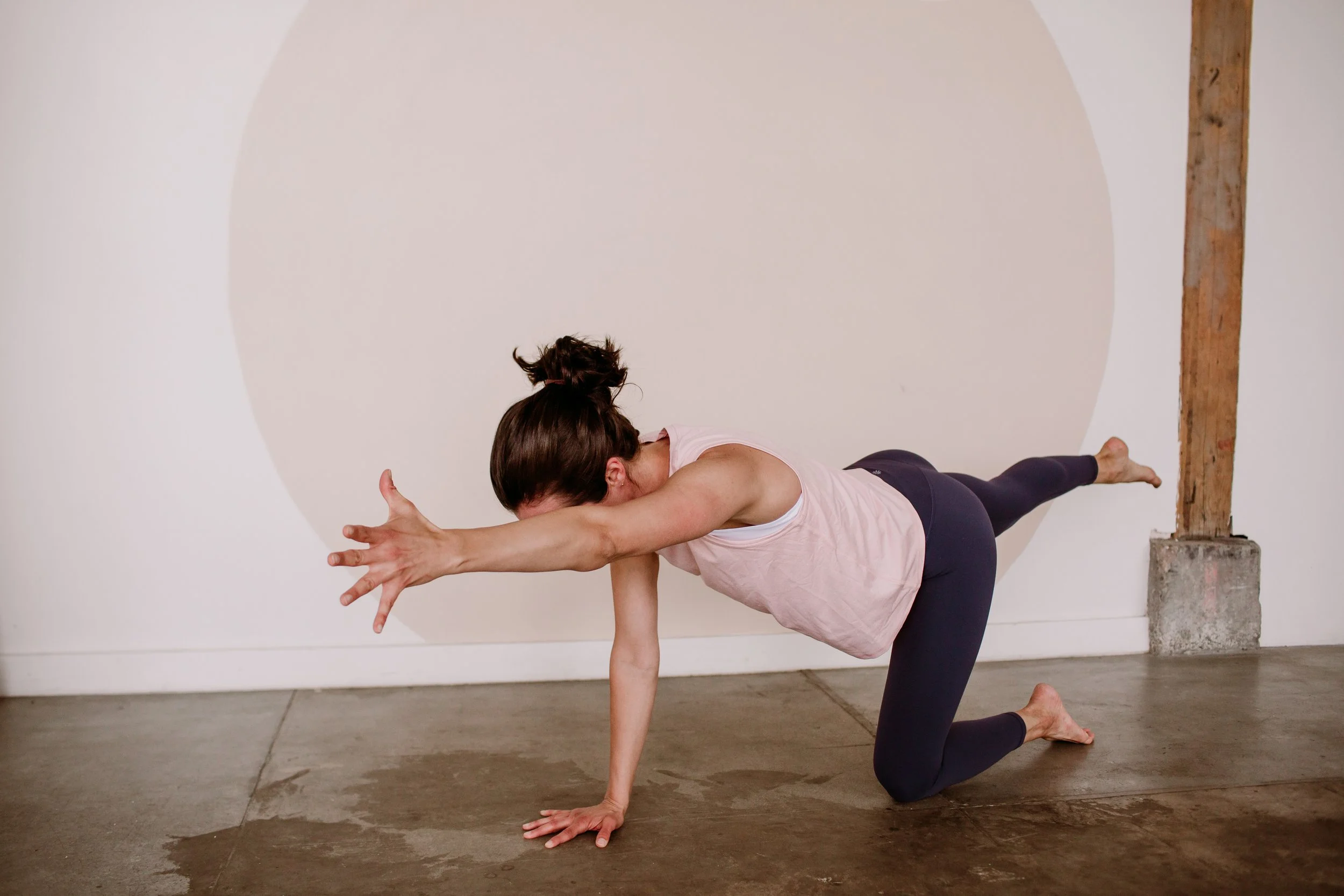Essential Moves For Core & Pelvic Floor
It goes without saying that core strength and integration are an important part of any fitness practice, but if you don’t have a dedicated core practice yet, I hope this blog gives you a few reasons and ways to build one.
Why Core & Pelvic Floor Strength Matter
Your core is the powerhouse of your body. It supports almost every movement you make, from lifting weights to simply bending down to tie your shoes.
Core Center
A strong core promotes stability and strength from the inside out by:
Improving posture while reducing back pain and the risk of injury. This can keep you pain-free and confident.
Enhancing stability and balance which facilitates more dynamic and challenging movement patterns. Hello, progress!
Supporting vital organs with proper positioning and circulation for better digestion, immunity, and reproductive function.
Pelvic Floor
The pelvic floor muscles support your bladder, bowel, and uterus. Strengthening these muscles is essential for women to:
Prevent prolapse & improve control of your bladder and bowels.
Support core stability as the foundation of all safe movement.
Enhance sexual health by promoting healthy circulation and sensation.
Primal Energy Centers
Beyond mechanics, your core and pelvic floor represent the first three powerful energy centers of your body. These regulate your sense of security, identity, and power. Which is why a strong pelvic floor helps:
Ground and stabilize both physically and energetically which can enhance your overall sense of well-being.
Promote upward flow of energy through the body, promoting balance and vitality.
Enhance creative flow and helps you express yourself more freely and creatively.
Beyond just the physical benefits, you can improve overall confidence and creativity by learning how integrate these muscular structures more deeply.
Essential Core & Pelvic Floor Exercises For Women
Below are my favorite core and pelvic floor exercises.
The key is to perform these VERY slowly and focus on activating the core using your exhale during exertion.
Bear Plank: this is an anti-extension exercise which means you're preventing the back from arching and it's my favorite because it provides a direct path to activating the core without compromising your lower back.
Bear Plank Pull: this anti-extension exercise has quickly become a staple in my practice because it recruits the deep core and helps develop better body awareness.
Bridge: this hip extension exercise will strengthen your glutes, lower back, and pelvic floor.
Dead Bugs: these combine anti-extension and flexion to help you connect to deeper abdominal layers like the transverse abdominus and internal obliques.
Birddogs: this flexion exercise will enhance stability and balance while improving communication between the left and right hemispheres of the brain.
T-Spine Rotation: this rotation exercise allows you to articulate the upper spine independent of the pelvis which can alleviate some of the "stuckness" that creates pain and disconnection.






If you're not doing these regularly, consider adding the 12-minute practice below to your regular weekly rotation.


